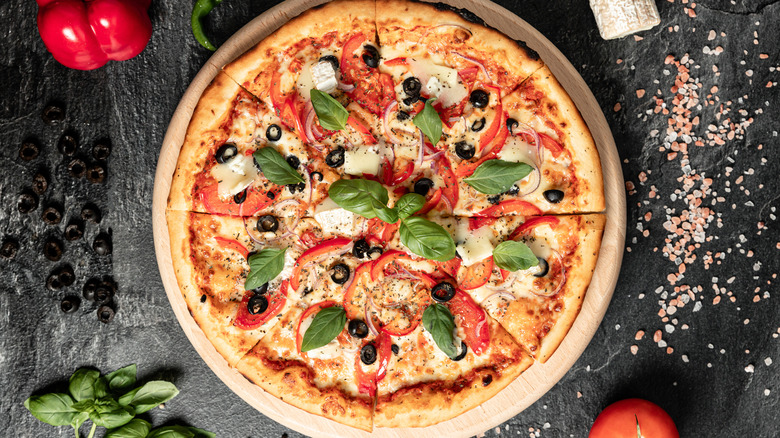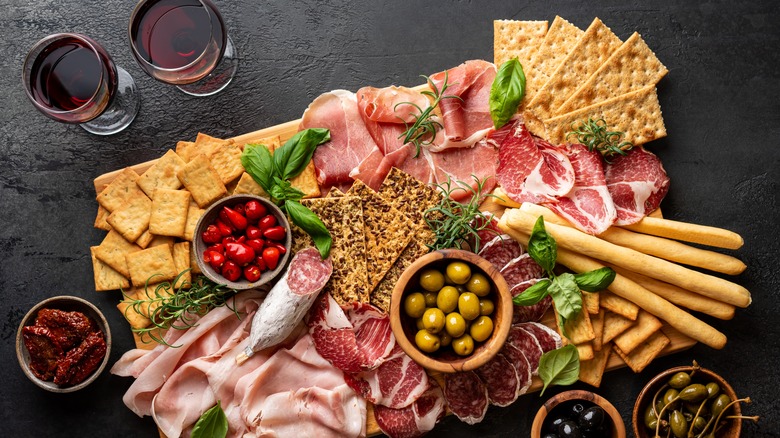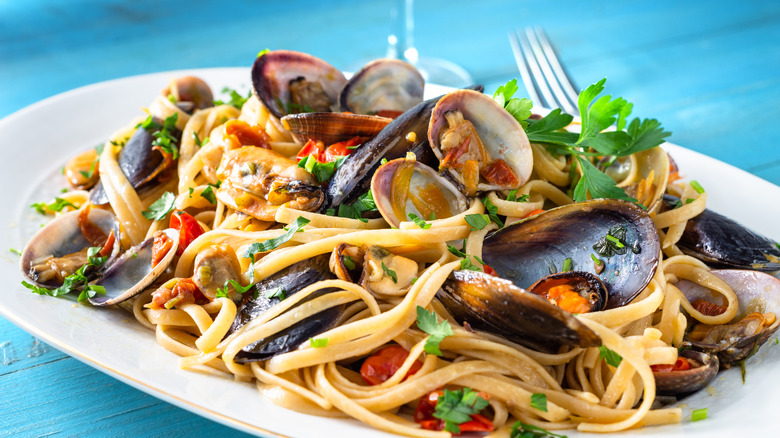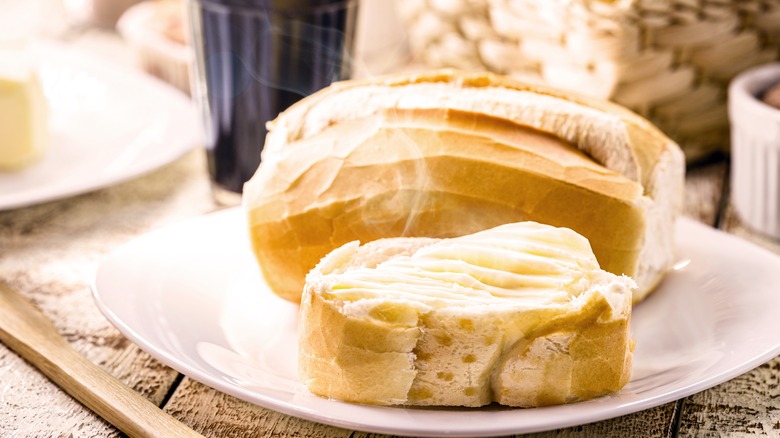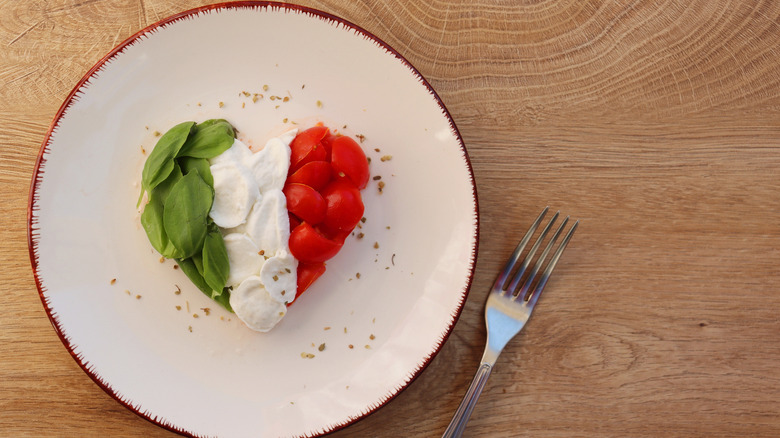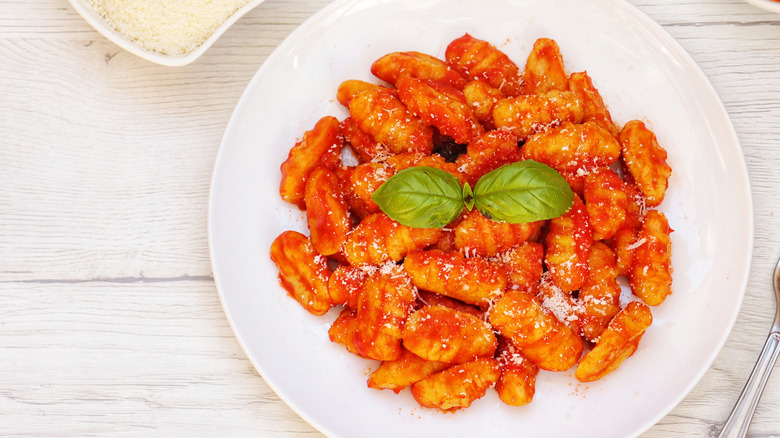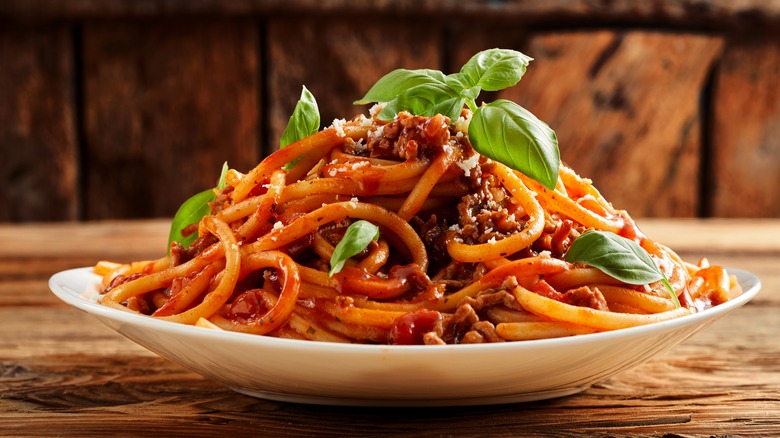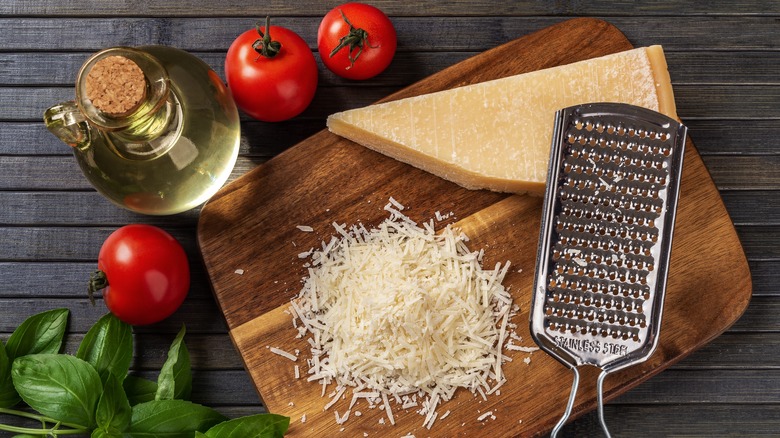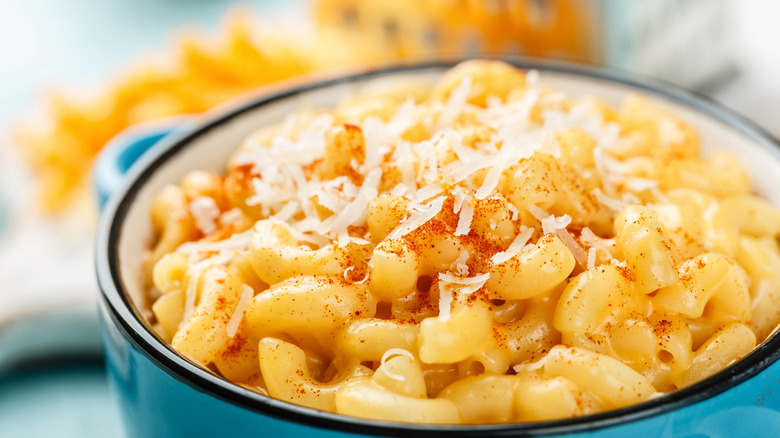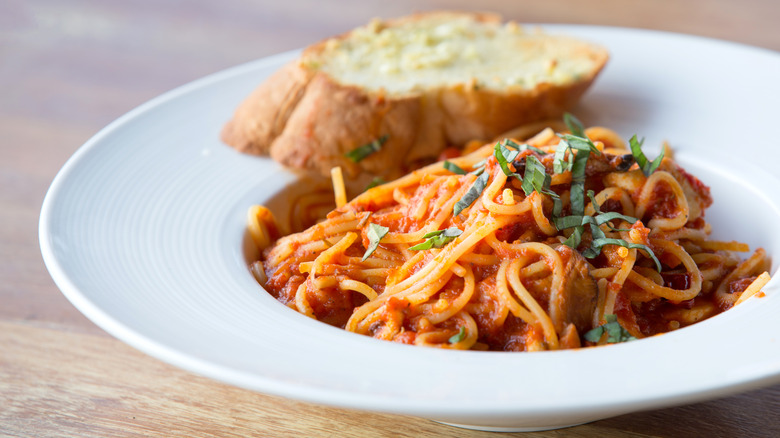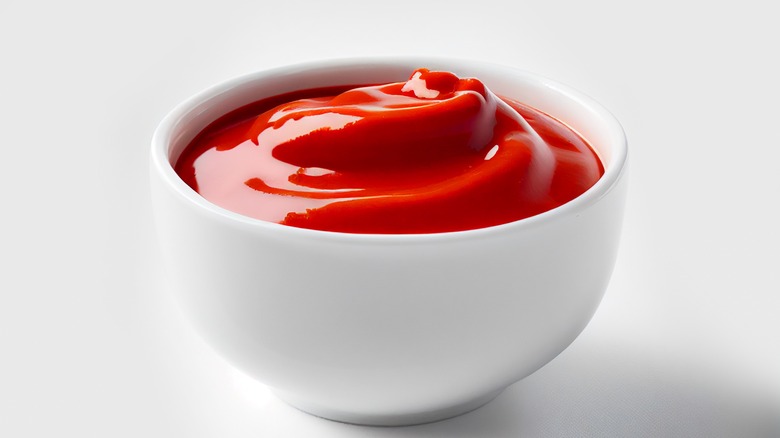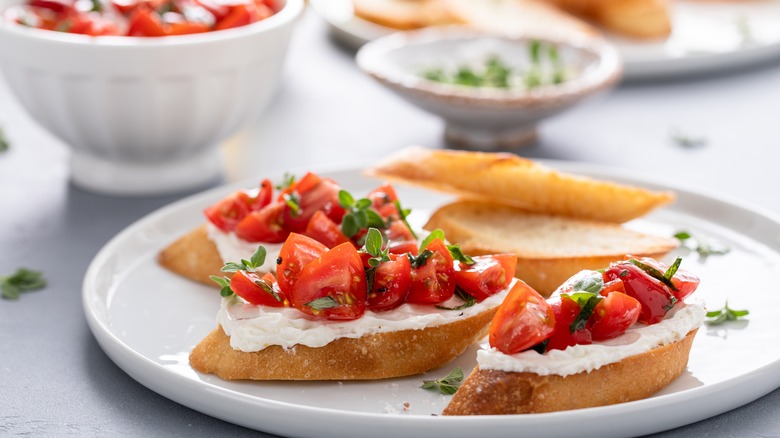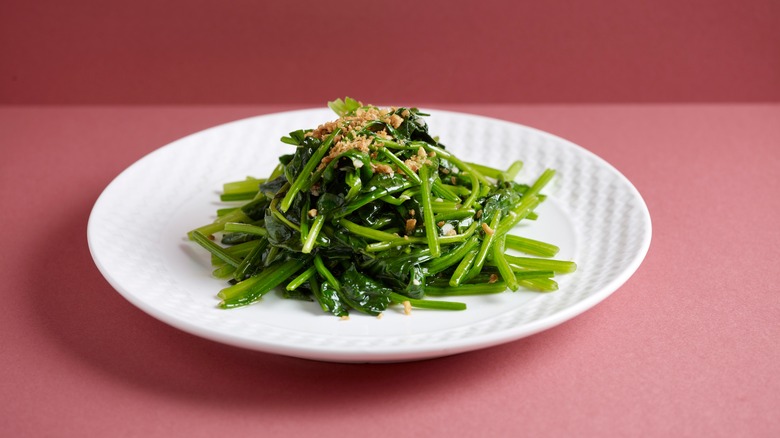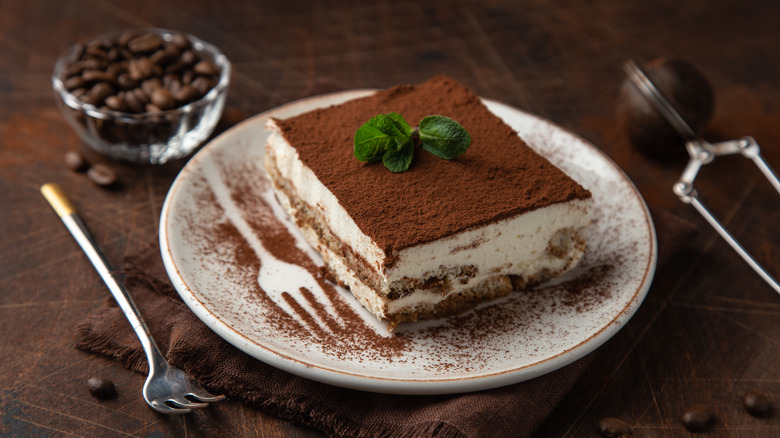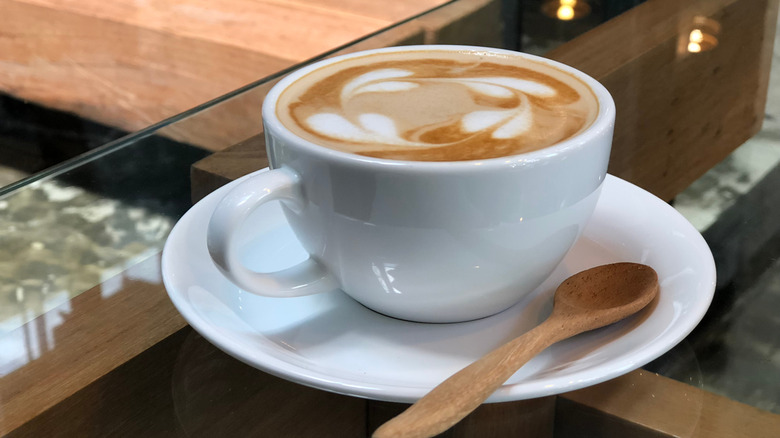Steer Clear Of These 15 Mistakes When Ordering Italian Cuisine
Since Italian food first arrived on our shores in the late 19th century, we have embraced it and infused it with American culture. There are now almost 50,000 Italian restaurants across the country, proving that our connection with Italian cuisine is as strong as ever.
Whether in a trattoria in a piazza in Rome or on a night out at your local Italian restaurant, navigating an Italian menu can be a tricky task. From figuring out how many courses to order to requesting parmesan on the wrong type of food, ordering Italian cuisine can be a culinary minefield that can result in some strange looks from your servers.
Join us as we navigate the do's and don'ts of Italian cuisine, helping you avoid common faux pas and soak up the experience of authentic Italian dining. Armed with our tips, you'll never make these mistakes when ordering Italian food again.
1. Skipping antipasti
When ordering your Italian meal, make sure to kick it off in style by ordering an antipasto. Literally translated as 'before the meal,' antipasti are an opportunity to ease yourself into the wonders of Italian flavors with a light dish that will whet your appetite for what is to come.
Antipasti platters are common both in Italy and in Italian restaurants in the U.S., with large tables often ordering a selection of platters to be shared by all. These may consist of a variety of cured meats, grilled vegetables, deep-fried seafood, and delicious Italian cheese. And let's not forget the olives, the quintessential appetizer to nibble on while you peruse the menu.
The beauty of antipasti lies in the diversity of choice depending on the region of Italy. In coastal areas, calamari and anchovies will likely feature heavily, whereas the south favors cheese and roasted vegetables such as eggplant. This course is designed to spark conversation with friends and family as you enjoy sharing and discussing the many flavors on offer. To skip this course would mean so much more than just missing out on some salami; it would mean bypassing an important part of the Italian dining experience and a chance to connect with those around you over your shared passion for food.
2. Confusing primi and secondi
As you scan your Italian menu, you may be looking to see which dishes come under 'main course,' but you are unlikely to find any. In Italy, courses are labeled as primi and secondi, meaning first and second course. Depending on how hungry you are, after your antipasto, you may have a primo, a secondo, or both.
Primi piatti tend to be pasta, risotto, and occasionally soups or omelets. These low-cost staples are designed to fill you up before the expensive meat course arrives. You will find regional specialties, including tagliatelle bolognese, risotto alla Milanese, or pasta alla Norma. There will usually be Italian classics such as carbonara and ragu alongside the regional dishes. Bear in mind that while vegetable-rich pastas are common, they may not be vegetarian since anchovies or bacon are often used to add depth of flavor.
Secondi piatti are more protein-focused, usually consisting of meat or fish, perhaps served with a simple sauce. This is where you find Bistecca Fiorentina – the famous T-bone steak hailing from the Tuscan city – or grilled swordfish if you are closer to the coast. These dishes are cooked simply and focus on high-quality, seasonal ingredients that show off the skill of the chef.
While you are free to order one or both of these courses, understanding the difference between the two is crucial to avoid overordering and potential embarrassment. A classic lasagna followed by a t-bone steak would be a challenge for even the heartiest of appetites, so choose wisely.
3. Asking for butter with your bread
In most Italian restaurants, bread will be offered at the start of a meal, often before you have ordered your food. In some restaurants in Italy, it may be complementary, but in most cases, you will pay pane e coperto (nowadays often shortened to coperto) meaning bread and cover, which is a flat fee of a few euros that covers the cost of the bread and grissini on the table.
While in many parts of the world, piling a slice of crusty bread high with butter might be the norm, in Italian restaurants, a request for butter will likely be met with disdain. The Italians are proud of their bread, which is often used to mop up sauce at the end of a course, but like most Mediterranean countries, Italy's cuisine focuses on heart-healthy oils.
The Italians make the most of their quality bread by dipping it in either extra virgin oil, balsamic vinegar, or a mixture of both. While you may feel disappointed at the omission of your usual butter, use it as an opportunity to indulge in the Mediterranean custom of bread and olive oil and enjoy the health benefits that come with it.
4. Assuming there are no healthy options on the menu
There is an assumption that Italian cuisine is full of guilty pleasures – cheese-covered carbs followed by lashings of ice cream washed down with a bottle of vino. Health-conscious diners will be pleased to learn that this stereotype does not accurately represent the typical Italian diet, which is, in fact, laden with seasonal vegetables and heart-friendly olive oil.
In reality, Italians do not eat the way we imagine. Though pizza and pasta are an important part of their culture, they do not form the foundation of every meal. Generally, pizza is only eaten in a pizzeria, meaning it is a treat to be enjoyed occasionally. Pasta is likely to be enjoyed more regularly but in small portions alongside plenty of fresh, seasonal vegetables rather than caked in a cheesy sauce.
Antipasti dishes feature vegetables heavily, from sundried tomatoes to grilled eggplant, and olives will always be present on the table. Extra virgin olive oil adorns nearly every dish, giving a daily dose of healthy unsaturated fat. Even meat-focused secondi piatti will usually feature lean meat without a heavy sauce with steamed vegetables available to order as side dishes.
The Italians put an emphasis on eating slowly and savoring the food and company, making them less likely to overeat. If you are looking to enjoy Italian food without compromising on your health goals, there will be plenty of nutrient-dense Mediterranean options for you to choose from rather than the carb-heavy classics that we are used to.
5. Asking for pineapple on your pizza
For lovers of a sweet and savory combo, Hawaiian pizza is an innovation that will keep them happy. Sweet pineapple cutting through the salty ham is a contrast that, for some people, works a treat. If you are planning on ordering one in Italy, though, you'd better have a plan B.
Pineapple on a pizza is a controversial enough topic here in the States, but in Italy, ordering one is likely to get you a few funny looks at best. The notion of adding this juicy fruit to their noble pizza is a step too far for most Italians, and Hawaiian pizza will only appear on menus in tourist restaurants.
If you are planning to order pineapple in your local American pizzeria, you may have more luck, though Italian waiters or owners may still react with disdain. For a similar fruity option that will cause less controversy, try figs instead, a traditional Roman dish dating back 2000 years.
6. Mispronouncing gnocchi
As you peruse your Italian menu, you will see numerous items that look difficult to pronounce. From focaccia to pappardelle, Italian waiters are used to English-speaking customers struggling with the names of certain dishes. A recent study found that the most misprounced Italian food is the potato-based gnocchi. These little dumplings may be a delight for the tastebuds, but they are proving to be a bit of a tongue twister.
The 'gn' sound is one that is not really found in the English language, and although most of us can cope with it in the middle of the word lasagna, it seems to be trickier to master at the beginning. To pronounce gnocchi correctly, imagine 'ny' at the start of the word instead of 'gn.' Additionally, the 'cch' is pronounced as a 'k, ' making the overall pronunciation 'nyo-kee. '
If this is too difficult to get your tongue around, the Anglicized version of 'no-kee' is widely recognized, though it may still raise an eyebrow from Italian purists. Whether you nail the pronunciation or not, your efforts will be appreciated by the staff, as it shows a genuine interest and respect for their culture and language.
7. Ordering spaghetti Bolognese
If your visit to an Italian trattoria has you deciding to play safe, you may decide to opt for a classic — spaghetti Bolognese. But you may be surprised, after a quick glance at the menu, to find it mysteriously absent. Strangely, spaghetti bolognese doesn't really exist in Italy. Rest assured, the sauce you are craving is on the menu, it just goes by another name — ragu.
Ragu alla Bolognese is the rich, meaty sauce that we are all familiar with, and its name is often shortened simply to ragu. But it is rarely served with spaghetti. Pasta shapes are not an arbitrary choice in Italian cuisine, with the perfect pasta being chosen to match each sauce. Instead of thin spaghetti, thick, wide tagliatelle is the chosen ribbon to match the beefy ragu. The increased surface area means the sauce can cling to the pasta, giving you the perfect amount of sauce and pasta with each delicious bite. In your local Italian-American restaurant you are more likely to see good ol' spag bol on the menu, but why not pay respect to Italian pasta culture and ask for tagliatelle al ragu instead?
8. Asking for parmesan with your seafood
Italy is well known for its cheese, and there are many that are worldwide renowned. Mozzarella, ricotta, and gorgonzola are all used in a variety of dishes, but parmesan is the one cheese that makes it onto virtually every dish in an Italian restaurant. Grated over pasta and risotto or shaved on top of an antipasto, the umami flavor of parmesan cheese elevates dishes in a way that no other ingredient can.
Think twice, however, before asking the waiter for parmesan on top of your seafood pasta. This is a culinary crime that will not be looked upon kindly by Italians who are sticklers for tradition. While it is your right to cover your own food in whatever seasoning you wish, adding parmesan to seafood is considered disrespectful toward the beautiful flavor of the delicate shellfish.
Parmesan has such a strong taste, and the pungent flavor may overpower seafood such as prawns and mussels. In the spirit of keeping your Italian flavors in balance, it may be wise to keep the parmesan for the fish-free dishes and ask for a twist of black pepper on your spaghetti alla scoglio instead.
9. Ordering mac and cheese
Italian-American restaurants may be synonymous with mac and cheese, but this is one of those strange dishes that doesn't really exist in Italy, certainly not in the same form. It may be one of the most popular Italian dishes in the States, but you won't find it on an Italian menu.
Traditional mac and cheese in this country is made with cheddar cheese and elbow macaroni, two ingredients that do not feature in classic Italian cuisine. While cheese and pasta are popular companions, rarely would non-Italian ingredients be used in an authentic Italian restaurant.
There is also the issue of texture. In Italy, pasta is always prepared 'al dente,' literally meaning 'to the tooth.' This is the perfect consistency for Italian pasta, cooked through but still firm and with a bit of bite. Mac and cheese, in all its gooey deliciousness, is not exactly al dente, its overcooked nature contributing to its comforting appeal.
If you are craving mac and cheese, there are a few rustic Italian options that should hit the spot. Cacio e pepe, meaning cheese and pepper, is a simple dish containing black pepper and pecorino cheese. It is lighter than our mac and cheese but still hits the same cheesy notes. Pasta ai quattro formaggi is another delicious option, made with four Italian cheeses that will vary from one restaurant to another.
10. Eating bread with pasta
Italian food is a carb lover's delight — pasta, pizza, focaccia, risotto; the list is long and delicious. But don't make the mistake of assuming that the Italians eat all of these starchy foods at the same time, even if pasta, bread, and fries on the same plate is a regular sight in American restaurants.
Bread is usually served in Italian restaurants, but it is not designed to be a side dish to your primo piatto. Instead, its main function is to mop up all the delicious oils and sauces that are left on your plate at the end of each course, an act known as 'scarpetta'. Bear in mind, though, that this is not considered polite in formal settings.
Italian bread can be enjoyed with any other course, whether it is a cured meat antipasto or a cheese course before dessert. While the wonders of Italian carbohydrate-rich foods are there to be enjoyed, be sure to give each one its appropriate place and time, and save the double carbs for another time.
11. Asking for ketchup
It may be second nature in your local steakhouse to order ketchup no matter what meal you're having, but this is seen as a culinary faux pas in an authentic Italian restaurant. Though the Italians love tomatoes in virtually every form, ketchup is strictly reserved for French fries.
Italian cooks take pride in their ability to create beautifully balanced dishes with fresh, seasonal ingredients, and asking for ketchup is considered an insult to their cooking. While it may seem normal for us to dip calamari into ketchup, an Italian would be horrified at the prospect. Appetizers that are designed to be dipped in tomato will be served with a homemade tomato sauce. If it doesn't have tomato on the plate, it's not designed to go with it!
Italian dishes are served to you exactly as the chef wants you to eat them, and adding ketchup to the mix will upset the balance of flavors. The next time you are in an Italian restaurant, take it as an opportunity to savor the delicious flavors without the addition of overly sweet tomato ketchup.
12. Mispronouncing bruschetta
Generally, when you visit an Italian restaurant and have a go at trying out your best Italian phrases, it will be met with gratitude and appreciation for the effort you have made. However, certain words that have been Anglicized do not sit well when mispronounced, and among the most common of these is bruschetta.
Always a favorite appetizer in Italian restaurants, bruschetta is a well-known word in English used to describe toasted bread topped with tomatoes, herbs, and other ingredients. However, many of us are pronouncing its name wrongly, much to the irritation of most natives. Instead of 'brushetta', the 'sch' in the word is pronounced as in 'school,' making 'brusketta' the correct pronunciation.
This has become such a common mistake that Italian Prime Minister Georgia Meloni has proposed fining those who pronounce it incorrectly! (via Business Insider.) While Meloni's contempt for "Anglomania" goes far beyond the famous appetizer, it may be worth working on your pronunciation to make sure you get it right, whether visiting Bella Italia or simply in your local pizzeria.
13. Expecting your main course to come with sides
In this country, we are used to ordering an entree and having it come with a few accompaniments, even if you might choose to add some side dishes on as well. In Italy, however, it is commonplace for secondi piatti to come as simply a piece of meat or fish with no vegetables or potatoes on the plate.
The good news is there is usually a wide variety of contorni, or side dishes, available to order alongside your main course. From a simple side salad to steamed spinach or roasted broccoli, Italians enjoy their veggies, and a menu will usually have them in abundance for you to choose from. There will likely be some potato dishes to choose from, too, including roast potatoes or fries.
The benefit of choosing your contorni separately is that you can select a side dish based on what you are in the mood to match with your meat or fish, rather than what the chef thinks complements it best. It also allows you to order a selection of vegetable sides for the table and share them, family style, to encourage everyone to try new flavors and immerse themselves in Italian food culture.
14. Skipping dolci
The grand finale of a good Italian meal is the dolci, which means the dessert or sweet. When ordering your savory courses, saving space for a decadent dessert means you don't have to miss out on the wonders of Italian sweet treats.
Like the courses that precede them, Italian dolci are influenced by the traditions of the region they come from. Tiramisu, panna cotta, and cannoli are famous Italian desserts, but there are many lesser-known indulgent treats for you to explore. Torta della nonna, translating as Grandma's pie, is a custard tart topped with pine nuts, while coffee lovers will appreciate the unusual pairing of espresso and ice cream in an affogato.
Of course, if you are not in the mood for a heavy dessert, an authentic Italian gelato should hit the spot, or a refreshing sorbet or granita for a brighter option. Italian desserts are a wonderful part of the cuisine that will provide a satisfying end to your meal and allow you to enjoy the artistry of the chef. It is pointless to resist, so indulge your sweet tooth and choose from the wide range of delicious options available.
15. Ordering a cappuccino
Coffee is a popular beverage in Italy, so you may be thinking that a nice after-dinner cappuccino would be a nice way to relax after your filling Italian meal. But you would be wrong. Ordering a cappuccino after a meal in Italy will be met with disbelief from some natives, who would advise ordering an espresso instead.
A cappuccino is considered a morning drink, suitable for accompanying breakfast, no later than 11 am. This is because it is a heavy, milky drink and could interfere with digestion later in the day. The good news is that this traditional rule is becoming less strict amongst the younger generation, so many establishments will be less fussy about which coffee you order. If you want to fit in with the more traditional Italians, try changing your order to a less milky option such as espresso or macchiato and save your cappuccino to have with your morning pastry.

